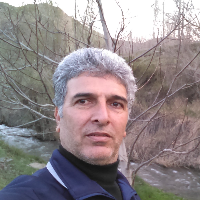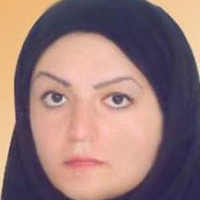The Cultural Transition from Late Neolithic to Early Chalcolithic in Border Land of Eastern Central Zagros
Author(s):
Article Type:
Research/Original Article (دارای رتبه معتبر)
Abstract:
Excavations at the Gheshlagh have the potential to shed indispensable light on the prehistoric cultures of the region. The absolute lack of earlier excavations with particular emphasis on the Chalcolithic period in the region further highlights the significance of the recent digging works at Tepe Gheshlagh. The main objective of these excavations is to establish the cultural sequence of the site. Other aims include dating the most important settlement attested at the site, and pinpointing the subsistence system of the Chalcolithic community that occupied it. Excavations at Tepe Gheshlagh have furnished invaluable information regarding the Dalma culture in eastern Kurdistan, thus enabling a more comprehensive analysis of the cultural accomplishments of the period here as compared to any other of the relevant sites. Tepe Gheshlagh lies between the natural corridor covered in a thick red or Ocherous slip and a type with applied decorations in the form of animal horns and tab handles may somehow relate the site to the Hassuna site of Umm Dabaghiyah, particularly as the deposit contained what seem to be sherds from husking trays. Results from the excavations suggest that a settlement that had continued uninterruptedly since the early Chalcolithic period was abruptly abandonment sometime at the end of the late phase of the same period, which corresponds with Godin Period VII. In the wake of this clear hiatus that coincided with the replacement in the region of the Yanik culture, a transient settlement again formed on the southern slope of the mound in the mid- or late Bronze period and later occupations at the site would continue into the Iron III. Therefore, settlements at Tepe Geshlagh span several periods. Though there is as yet no conclusive evidence to account for this fluctuating settlement history, it may partially be attributed to the environmental pollution prompted by local tin, copper and plaster (tophus) mines, the strains caused by famine, and the less-fertile nature of regional soil. In general, though a sequence from the Chalcolithic through the Iron III has been documented at Tepe Gheshlagh, the settlements did not continue incessantly as there are clear evidence for a prolonged gap at the end of the late Chalcolithic era which would simply be interrupted in the mid-or late Bronze Age with a transient occupation of a transhumant group on parts of the southern slope of the mound. And, it was only in the late Iron Age, in about the eighth or seventh century B.C., that another major settlement was developed on the eastern slope of the mound. Infertile soil, rather high elevation and, consequently, the relatively colder climate compared with the surrounding regions as Considering that in the cultural materials of this exploration there are signs of the traditions of the Late Neolithic period, therefore, the main purpose of this article is to examine the process of the transition of cultural traditions from Late Neolithic Period to Early chalcolithic period, which has so far been dealt with, given that There is evidence in the Gheshlagh that the way this process is explained. These studies can illustrate the cultural relations of the ancient rural communities in the eastern part of the central Zagros with neighboring regions such as northwest Iran and Mesopotamia. On the other hand, the origin and form of the formation of the first rural cultures and the transition to the complex livelihoods, economic and social systems, thats important.
Keywords:
Language:
Persian
Published:
Iranian Archaeological Research Journal, Volume:8 Issue: 16, 2018
Pages:
83 to 102
https://magiran.com/p1846010
مقالات دیگری از این نویسنده (گان)
-
Analyzing Animals as A Subject: Economic and Symbolic Role of Animals at Tape Qeshlaq, A Chalcolithic Settlement in the Central Zagros, Iran
Zahra Dehghan, *
Iranian Archaeological Research Journal, Summer 2024 -
Structuralism in archeology and its application in the analysis of cultural materials left from the past
Mohammadhassan Salek Akbari, *
Iranian Journal of Anthropology Research, -
Absolute (14C AMS) and Relative Chronologies of Barveh Tepe in the Upper Lesser Zab Basin and a Study of Painted Bronze Age Ceramics(Based on the Second Season Excavation)Season Excavation)
*, Barbara Helwing
Journal of Archaeological Studies, Summer-Autumn 2023 -
Pottery Making Technology from Late Chalcolithic Period in Girdi Ashoan tepe,(North west Iran),Based on XRD,XRF and Petrography Techniques
*, Afrasiab Garavand
Journal of Research on Archaeometry,




